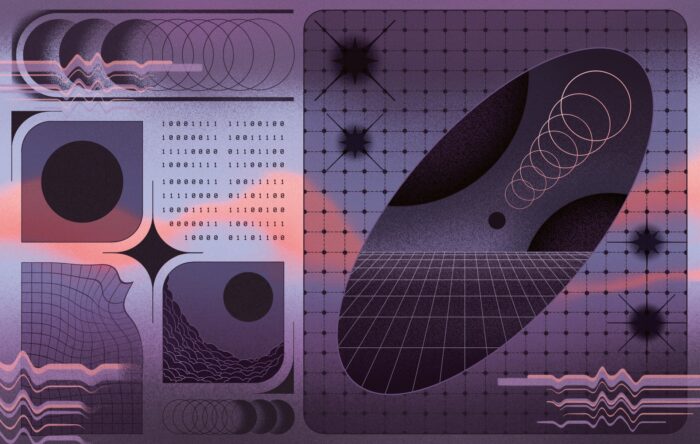
In turn, we use cookies to measure and obtain statistical data about the navigation of the users. You can configure and accept the use of the cookies, and modify your consent options, at any time.

The idea of cyborg modification goes back at least to Edgar Allan Poe’s short story “The Man That Was Used Up” from 1839. As for technological modification as a means of human enhancement, an early example of this idea is found as far back as 1879, in Edgar Page Mitchell’s 1879 short story “The Ablest Man in the World”.
In the real world, ‘Cyborg Singularity’ is finally looming in the horizon. Tomorrow (or sometime in the not- so-distant future) technology will aid our evolution into an entirely new species, the Techno Sapiens, that will be able to reach mental and physical feats that we can only imagine. Or so, at least, we are sometimes led to believe. Nowadays, the proselytes of this vision can be found in the (post-) modern transhumanist movement, with Oxford philosopher Nick Bostrom as their most prominent spokesperson, Collectively, they envision a future of evermore enhancement and perfection in a world where technological evolution has taken over from the point where biological evolution left-off.
The concept of transhumanism itself can be traced all the way back to Julian Huxley (evolutionary biologist, international socialist, eugenicist, the first chairman of Unesco, and brother of Aldous, author of Brave New World). In its present form however, its main theoretical inspiration is probably Donna Haraway’s famous post-human “Cyborg Manifesto” from the 1980s. This paper argues that the classic binary distinction of Aristotelian logic between nature and culture is fundamentally flawed and should be rejected in favour of a metaphysical position that regards the hybrid cyborg as the fundamental point of departure for understanding and intervening in the world. As the knowledgeable reader may be aware of, this classic paper has found relevance within a variety of intellectual domains, including bioethics, feminism, and gender theory. It’s rejection of the nature-culture binary is ‘translated’ by Bostrom and other modern-day transhumanists into a general rejection of the distinction between the biological and the technological domains. And, as we shall see in a moment, this is where the trouble really begins.
Several criticisms have been directed at the idea of transhumanist enhancement, many of them centring on their moral or political consequences. Some of these criticisms revolve around questions of access, inequality, justice, and related issues. Other criticisms may be directed towards questions of sustainability and the environmental implications of large scale technological-human enhancement. While all of these questions are important for a general assessment of transhumanist enhancement, they are not the focal point here. Instead, my point of departure will be the rather flamboyant way in which Bostrom and others tend to make the technical and biological side of these perceived transformations look like a walk in the park. As it turns out, their extraordinary claims are based on some rather tentative biological presuppositions that severely underestimate the complexities of modern evolutionary theory.
Never say higher, never say lower. This early warning appears in one of the many entries in Darwin’s diaries. It served him as a reminder to not conflate complexity of organisation with capability for survival; even the tiniest microorganism has stood the test of evolutionary time in every aspect comparable to the most advanced biological entities. In fact, as it turns out, it is often the simpler design that is the more superior in evolutionary terms. The basic composition of a bacteria has endured for several billions of years. In comparison, the era of dinosaurs (here excluding their present feather-clad avian survivors, which are still with us today) ‘only’ lasted for a ‘mere’ 185 million years, and included a wide variety of shifting ecosystems. Within the discipline of palaeontology, it is common wisdom that the average life span of a species in the fossil record is about five million years. It’s a tentative figure – partly because the concept of species itself is hard to define, let alone to delineate. But you get the picture. While bacteria, jellyfish and cockroaches endure, the larger and more complex organisms in general have a more limited life expectancy. Part of the reason for this is undoubtedly that there is a high energy expenditure connected with the development and maintenance of a large organism with complex organisation. Indeed, it goes in evolutionary biology – as anywhere else – that there is no such thing as a free lunch. A particular consequence of this is that high energy expenditure tends to make large and complex organisms rather vulnerable to disturbances in their ecosystems. The logic behind this should be quite clear. A Cretaceous top predator like Tyrannosaurus rex had to sustain itself on a constant flow of animal biomass, which itself made the availability of large prey animals in its proximity a vital condition for its own survival. Any imaginable disaster could have thrown this scheme off balance. Parallel kinds of logic may be constructed in the cases of large herbivores, who may often be specialised into very specific diets and/or dependent on wandering around in a wide geographical area in order the gather enough food and water for their own survival. The case of the giant panda, which has become the emblematic paradigm animal for the World Wildlife Foundation, is a clear example of the former situation, as it lives almost solely by the fresh shoots and leaves of bamboo. A paradigm example of the latter situation might be the woolly mammoth which finally went extinct somewhere in Northern Siberia for about 4000 years ago. After much debate, it has now been settled that the primary cause of its extinction was the destruction of its habitat as a result of climate changes during the end of the last ice age. The population of mammoths quite simply dwindled together with the reduction of the Mammoth Steppe that was their home, until finally neither was left.
Clearly, the evolutionary dynamics of these examples are very different from those of the jellyfish or the cockroach. A common approach in evolutionary biology is therefore to speak about strategies for survival. A classic textbook distinction within the discipline of ecology, which may serve to illustrate this, is that between the strategies of r- and K-selection. Simply put, an organism surviving in an r-selection regime combines high rate of propagation with a relatively short longevity. Known examples of this strategy include the fruit fly and the common rat. Conversely, an organism surviving in a K-selection regime combines a relatively high longevity with a high rate of offspring survival. Known examples of this strategy include the elephant and the blue whale. As may be evident, this latter strategy is costly in terms of energy expenditure, and it is also vulnerable to the appearance of new threats or disturbances.
The biological constraints mentioned above are those on the level of ecosystems. But the level of ecosystems is not the only one where these principles apply. On the behavioural level, a whole subfield of game theory is devoted to studying the dynamic of cheating and collaboration behind evolutionary stable strategies. There are also equally strong constraints working on the functional anatomy of individual organisms that maintain their existence by functioning as an organisational entity. Take for instance the case of Belgian Blue cattle which has been bred to grow double muscle mass. A dream scenario for any transhumanist superhero, right? Not so. As it turns out, this heritable modification is also associated with severe heart problems and connected health issues. An equally strong case can be made against the thoroughbred horse, which has been developed specifically for racing purposes. As it turns out, these gains in speed and agility come at the price of low fertility, abnormally small hearts, and proneness to bleeding from the lungs.
There is of course an old evolutionary wisdom in this example in the sense that it highlights the fact that there are no shortcuts to adaptive improvement. In a way, the whole idea that human intervention can serve to facilitate adaptive improvements that natural selection has not been able to provide, may itself seem to be a gross underestimation of the selective pressure against organisms that are constantly being tested by nature, red in tooth and claw. Or, to put in polemical terms: if it is so easy to improve on our capacities, then why hasn’t nature done so already?
The answer to this question should be obvious by now. When it comes down to the basics, the transhumanist visions of enhancement and perfection are notions that really don’t fit into a Darwinian framework. They belong instead to an older view of evolution, which is that of the French zoologist Jean-Baptiste Lamarck. According to Lamarck’s older theory of evolution, all organisms are believed to contain an inner drive that pursues perfection and complexity. It was also Lamarck’s belief that acquired characters may be inherited through the next generations. Within transhumanist thinking, this idea has an odd parallel in the notion that perfection and complexity may be achieved through acquiring technological modifications.
For the cyberpunk-inspired bio-hackers that comprise the experimenting frontline of the transhumanist movement, there is of course a message in this, which is that their endeavour is a gamble. Presumably most of them are probably already aware that there are health risks associated with the insertion of implant technology. Among the most well-known detrimental side-effect is the growth of pathogenic bacteria like staphyloccoccus as biofilm adjacent to the implant. As for brain implant technology, there are also risks of possible psychic disorders, for instance the risk of developing depression in connection with treatment by deep brain stimulation.
Examples like these may certainly serve as a caution against a naive and unwarranted belief that biological constraints are irrelevant for transhumanist attempts to turn the vision of Techno Sapiens from a bio-fictional construct into reality. Beyond that, the application of inserted technology as a means to (trans)human enhancement is not just a gamble in terms of how a specific implant of bio-substance will affect the rest of your body. It is a gamble on a much more general level. It is a gamble against evolutionary theory.
It is therefore time for a reconsideration. Rather than embracing and old-fashioned (Lamarckian) belief in automated evolutionary progress towards perfection, the transhumanist movement needs to do a reality check and reorient itself towards the modern-day constraint-ridden approach of Darwinian evolutionary theory. In this reorientation, new important questions will emerge, as others disappear. And indeed, in terms of survival, the most vital of these questions has become a gamble of existential proportions.